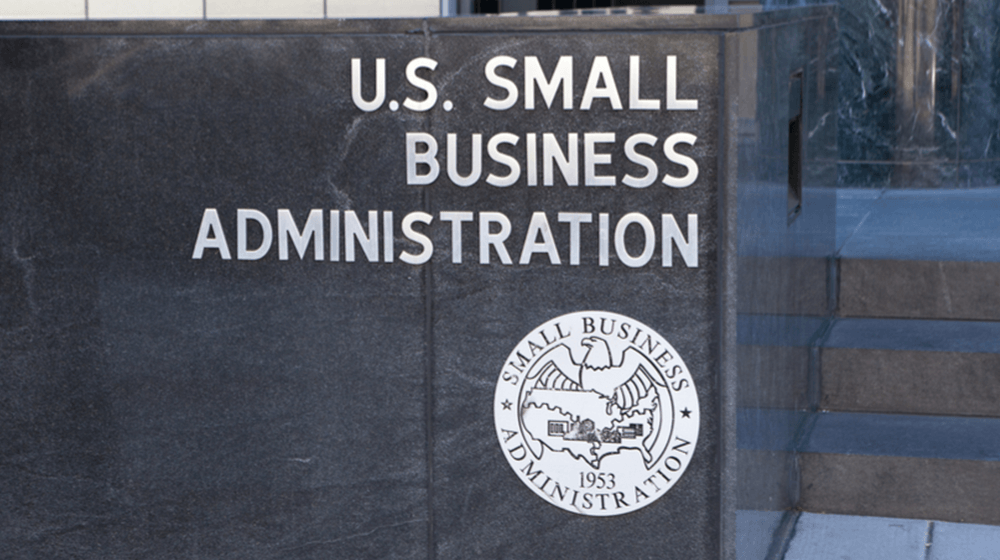- U.S. Small Business Administration issues interim final rule expanding access to its COVID EIDL program
- Loans are now available to applicants in hard-hit industries who have up to 20 locations and fewer than 500 employees per location
- Other changes include the ability to use COVID EIDL funding to pay down debt
Summary by Dirk Langeveld
Eligibility for the U.S. Small Business Administration’s last remaining COVID-19 relief program has been expanded, opening financing to certain larger entities in hard-hit industries that were excluded under the program’s previous rules.
In an interim final rule, the SBA has expanded its COVID Economic Injury Disaster Loan program to entities with up to 20 locations, provided each location has no more than 500 employees. The program was previously limited to small businesses, nonprofits, and agricultural businesses with fewer than 500 employees.
The change is part of the SBA’s overall strategy of encouraging businesses to take advantage of the COVID EIDL program, which will run through the end of the year or until funding runs out. The program has been funded with $367.1 billion, and 3.83 million loans totaling $262.7 billion had been approved as of Sept. 2.
The SBA says the rule is being updated without advance notice or comment in order to offer eligible entities the maximum amount of time to apply for a loan, and for the SBA to have ample time to process applications.
COVID EIDL is the last remaining SBA program offering direct financing to businesses, following the expiration of the Paycheck Protection Program as well as two grant programs to support arts and cultural venues as well as the food and beverage industry.
Expanded eligibility
The SBA says the changes to the program intend to address an unmet need it says still exists among small businesses, especially as a new spike in COVID-19 cases causes consumers to alter their behaviors and renews the potential for diminished revenues. The agency noted how 177,300 of the 278,304 applicants to the Restaurant Revitalization Fund were left out of the program’s funding, since applicants sought more than $72 billion against its $28.6 billion in available funds.
Under the rule change, businesses with no more than 20 locations can apply for COVID EIDL loans if they have fewer than 500 employees per physical location, not fewer than 500 employees in total. The change applies to companies identified by certain NAICS codes that the SBA determined were particularly hard-hit by government-ordered shutdowns and other pandemic conditions, including:
- Educational services
- Arts and entertainment
- Accommodation and food services
- Support activities for mining
- Apparel manufacturing
- Clothing and clothing accessories stores
- Air transportation
- Transit and ground passenger transportation
- Scenic and sightseeing transportation
- Publishing industries (except online)
- Motion picture and sound recording industries
- Broadcasting services (except online)
- Rental and leasing services
- Personal and laundry services
- Sporting goods, hobby, book, and music stores
The change is applicable for all new COVID EIDL applications. Qualifying businesses can receive up to $500,000 through a 30-year loan, with a 3.75 percent interest rate for businesses and 2.75 percent rate for nonprofits.
Some business groups, especially those in accommodation and food service, have called for the loan cap to be raised to $2 million. The SBA has pledged to increasing the limit, but so far has not taken this step.
Debt payments
Another key change made in the interim rule allows COVID EIDL borrowers to use the proceeds to pay down debt. The program was originally structured to provide working capital and allow businesses to meet expenses directly attributable to economic injury caused by the pandemic, with debt payments excluded. However, the SBA says many businesses are struggling with debt payments as a result of the pandemic, since they took on short-term debt or accrued debt in anticipation that the crisis would not last long.
COVID EIDL funds may now be used for paying monthly debt payments, deferred interest, and pre-payment of business debt. However, pre-payment is not allowed for debt owned by a federal agency or a Small Business Investment Company.
Other changes
Other changes include:
- Limiting the amount of COVID EIDL funding any one corporate group can receive to $10 million
- The adoption of the same affiliation definition used in the Restaurant Revitalization Fund, namely that it is “a business in which an eligible entity has an equity interest or right to profit distributions of not less than 50 percent, or in which an eligible entity has the contractual authority to control the direction of the business, provided that such affiliation shall be determined as of any arrangements or agreements in existence as of January 31, 2020.”
- Allowing either the director of the SBA’s Disaster Assistance Processing and Disbursement Center or a director’s designee to make a decision on appeals for the second decline of a disaster loan








